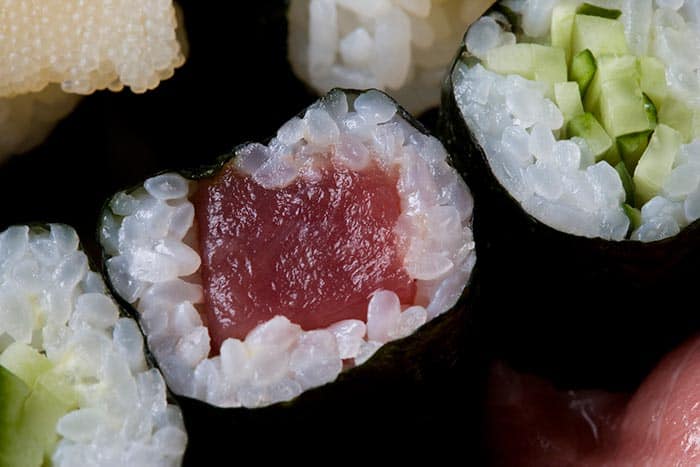How to make homemade sushi step by step
Today we are going to learn how to make sushi, and for that, I recommend having our rice recipe for sushi handy, because we will need it.
Different types of sushi
In true Japanese cuisine, sushi is prepared with rice and fish. In fact, its name corresponds to rice. There are various types of sushi, such as nigiri sushi or rolls, or sushi maki. Today we are going to concentrate on the latter.
How to make sushi
It is very important that the fish you are going to use is fresh and that it is bought in a trusted fish market.
We are going to make a simple recipe with salmon or tuna.


Homemade sushi: ingredients and preparation
You can use the ends of the plastic to wrap the roll, as if it were a piece of candy. This will make it easier to take it to the freezer for about fifteen minutes, so that it hardens slightly and then is easier to cut.
At the time of serving, you can accompany the sushi rolls with a little wasabi, pickled ginger and a small container with soy sauce, to wet them.
Sushi rolls or makis prepared in this way, with the seaweed on the outside, are known as hosomaki or futomaki. The first name is used for thin rolls, and the second for thick rolls.
Tips for preparing sushi
- When choosing fish meat, the most It is convenient to use the spine or belly.There you will also find nori seaweed, pickled ginger, wasabi, bamboo mat and, in principle, everything you need for the sushi recipe.
- If you like wasabi a lot, you can draw with it (With a little!) A kind of line in the center of the rice surface, before placing the pieces of fish for the filling of the rolls.
- If you are a vegetarian, you can prepare kappamaki, a roll that uses cucumber instead of fish.
- There is a tendency to freeze the fish for 48 hours, and then thaw them for use in sushi. This takes away some freshness, but it is a measure against the risks of infection with parasites. In the case of salmon and tuna there is much lower risk of infection, than in the case of river fish. If the fish that is used is fresh, it has to be truly fresh, with no color changes or bad odors.
- To accompany your sushi rolls, you can choose between a sauce of soy or a ponzu sauce, mix of soy sauce, citrus and rice vinegar or rice wine (mirin).
Now that you know how to make sushi, you can also try our recipe for teriyaki sauce, our fish ceviche, our Chinese lemon chicken or this sweet and sour sauce recipe to accompany meats or white rice.
Comments
Comments
